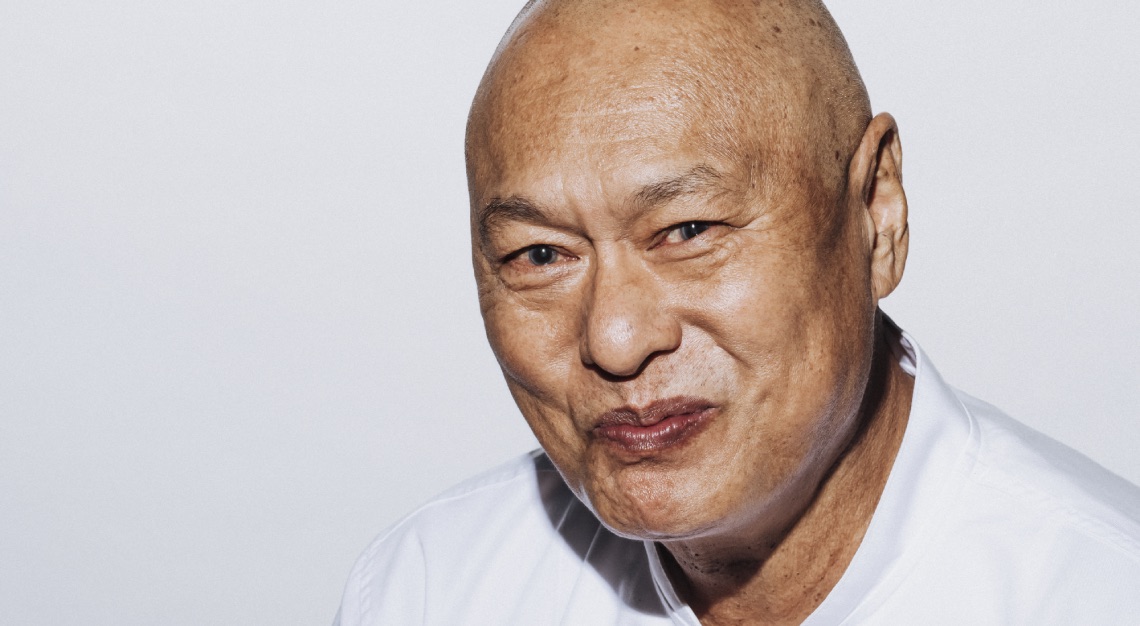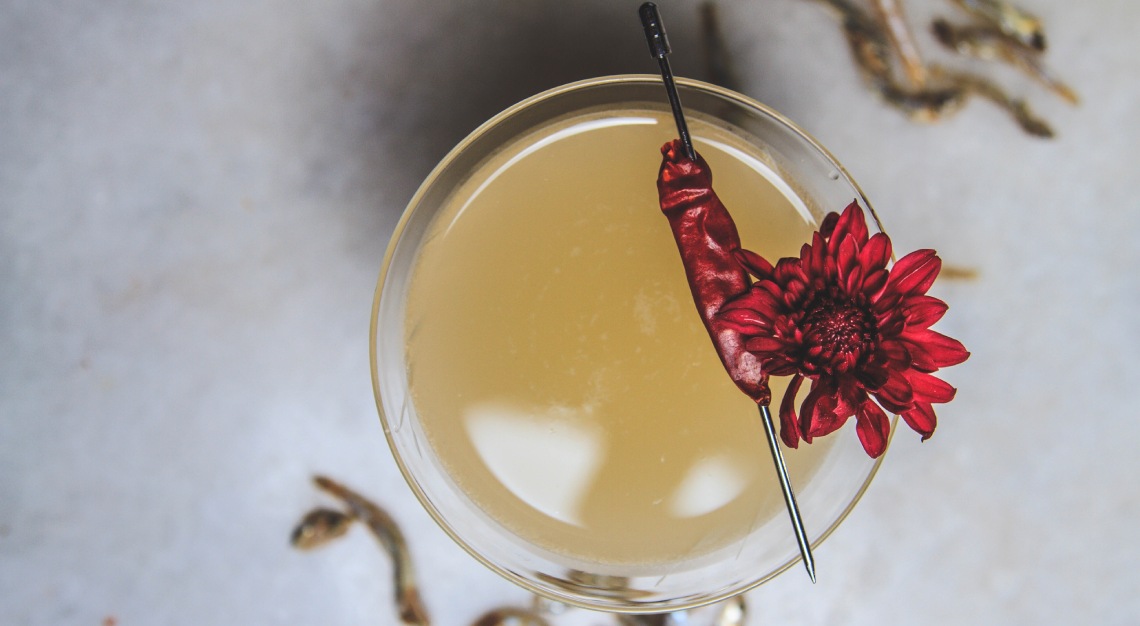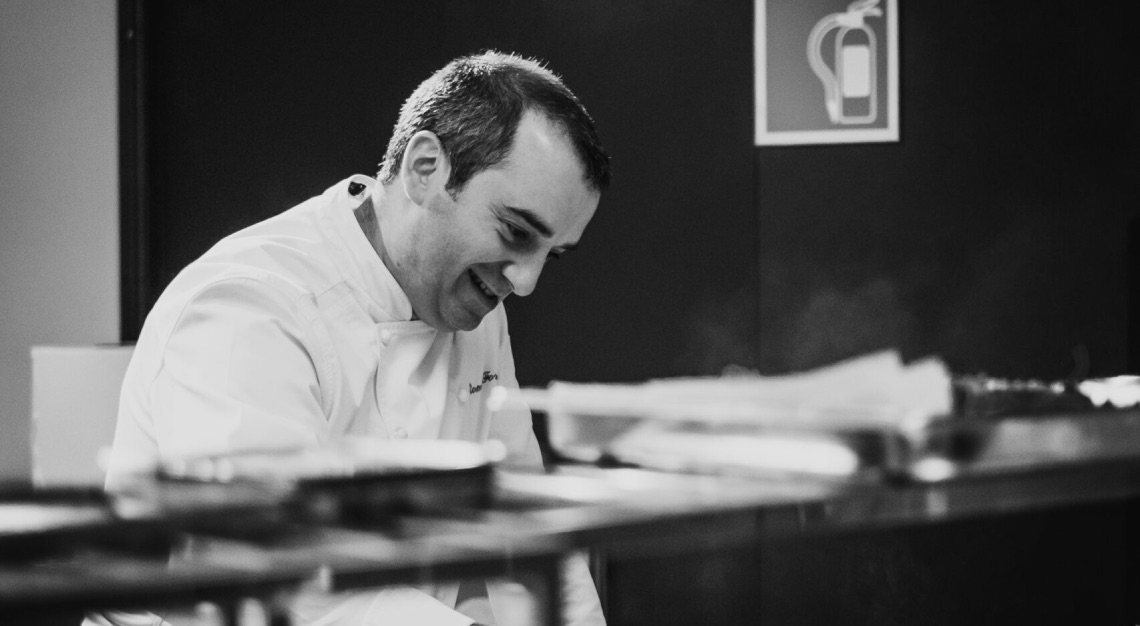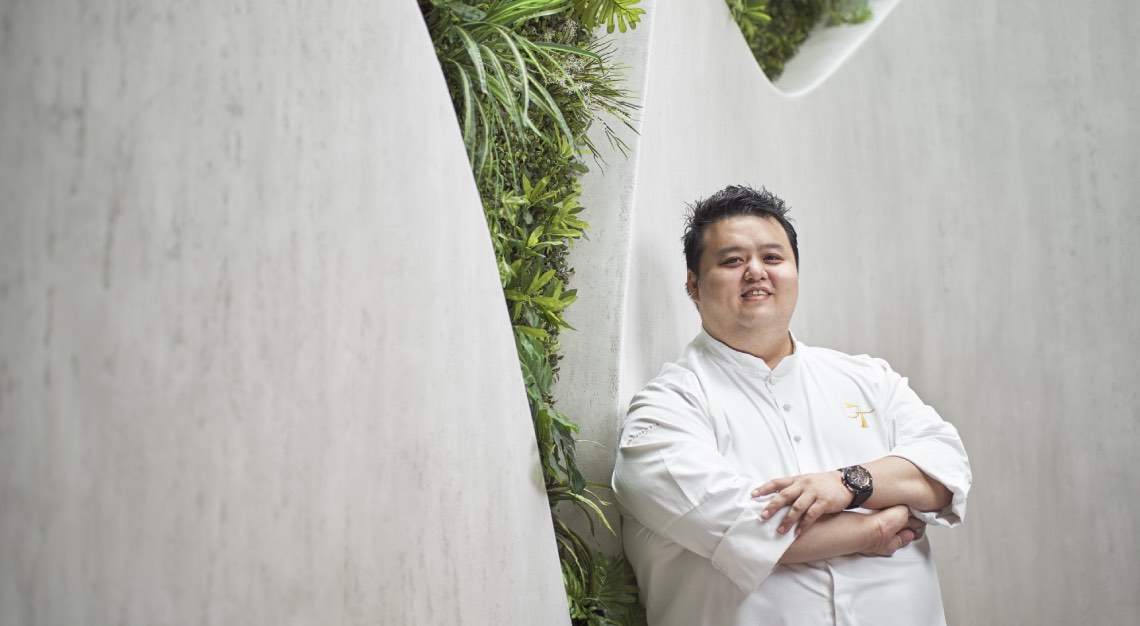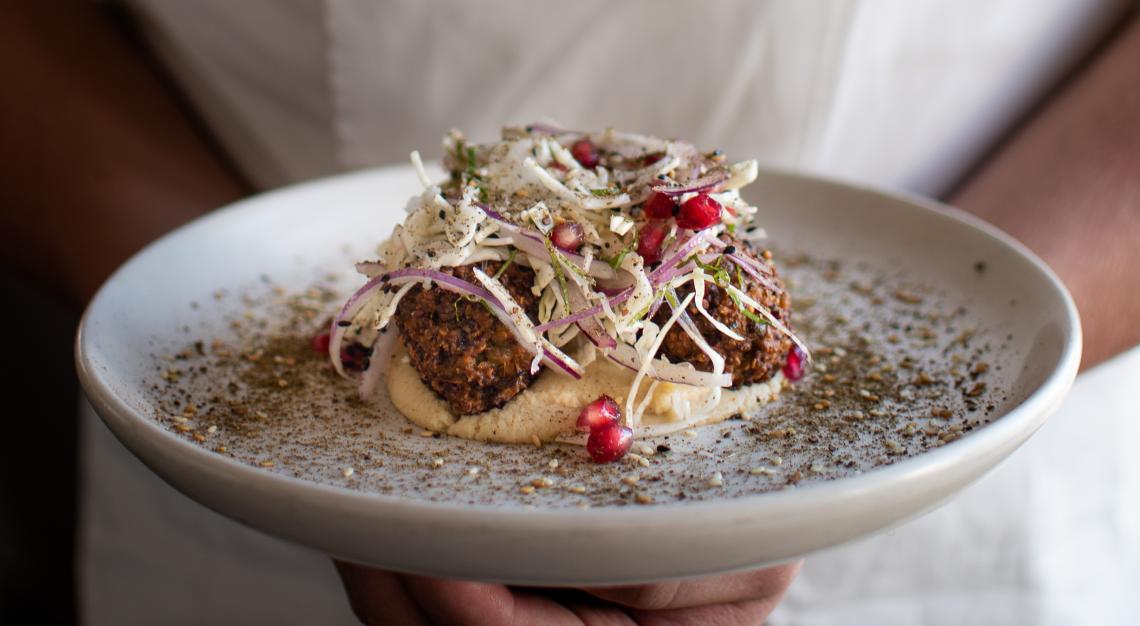Welcome to On The Table, where we feature recipes by Singapore’s best chefs and bartenders. In part two of this series, we explore Singapore’s heritage and life after Restaurant Kin with chef Damian D’Silva
It is four in the afternoon on a Thursday. The restaurant is on a break before the dinner rush, the floor is getting a light scrub and I’ve just made the chef cry. What felt like an Oprah moment was the answer to the question: “What is your greatest vulnerability?”
I’d hit a nerve. Damian D’Silva – 65, MasterChef Singapore judge and a crusader for Singapore’s food – heaves the heaviest sigh. It reminded him of his late father, whom he felt he’d let down greatly. “For many years after my divorce, I ran away and shut myself from everybody, including my kids. I felt like I’d disappointed my parents. It wasn’t until years later, just before my dad passed, when I asked for his forgiveness and he said that there was nothing to forgive.”
The prodigal son had returned and he’s still here. D’Silva, who spent his years away cooking in Italy and France, came home and brought Europe with him by starting his first restaurant, Citrine Chocolat, in 2000. But as someone who grew up with grandparents who could cook (think Chinese, Malay, Indian, Eurasian and Peranakan), he wanted to shine the spotlight on Singapore’s heritage cuisine, and thus began The Soul Kitchen and until just recently, the now-defunct Restaurant Kin.
He’s currently working on a weekly sharing menu for takeaways (S$160 for four, including delivery), and a casual restaurant that’s scheduled to open in early 2022. For now, he’ll share with us a delicious noodle recipe from his childhood and musings about cooking, madness and humility.
Editor’s note: Check out the weekly sharing menu here. (Updated on 12 August 2021)
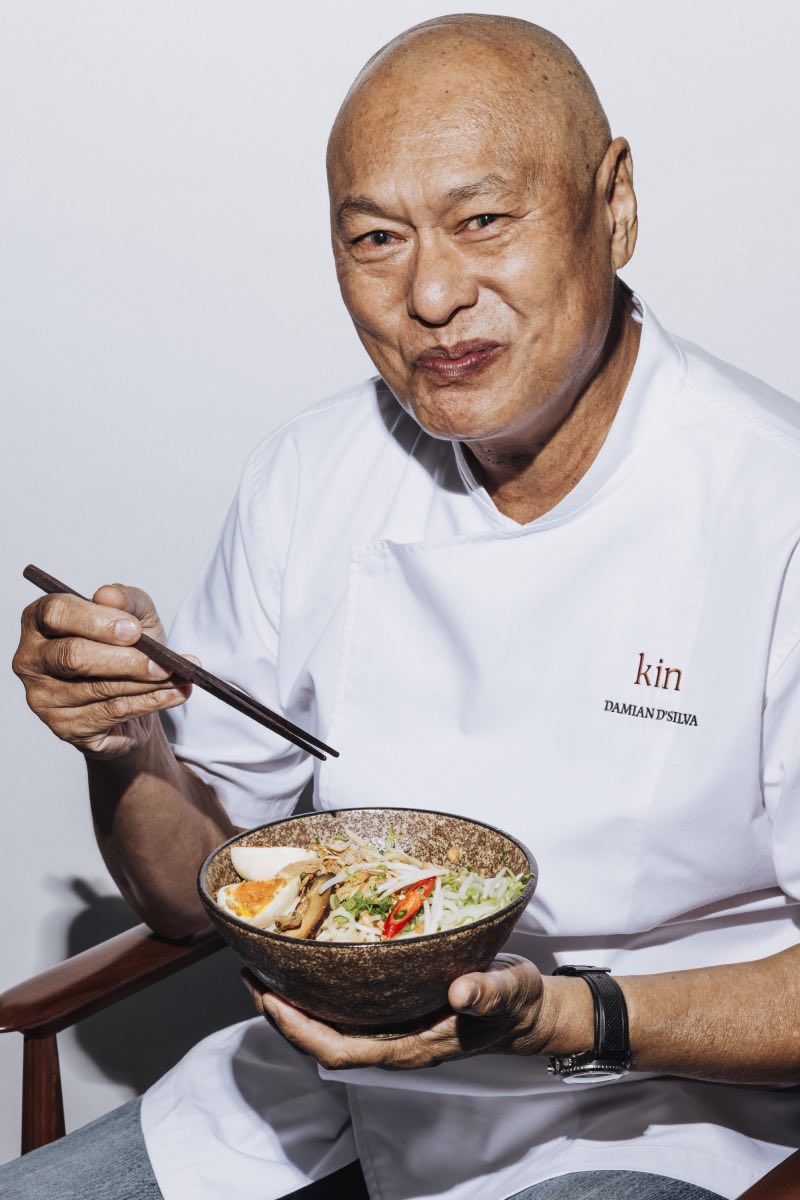
Does cooking keep you young?
Travelling keeps me young. Cooking keeps me going. It keeps my mind ticking.
Would you say that what you’ve done in these past years have well represented the place that you are in now in life?
I wouldn’t say I’m not happy, but there’s a lot more to be done. For example, I plan to write a book, and the reason I haven’t written it is that I don’t want to write a book that stays on someone’s shelf. I want it to be something people talk about and use. I want it to eventually become a bible.
Being a guardian of Singapore’s heritage food must be very important to you.
It always has been. People don’t know how much pain I feel when they don’t realise how important it is. It’s who you are and it’s what made us special, whether we are Malay, Chinese, Indian, Peranakan or Eurasian.
Has there been an improvement in the appreciation of Singapore’s heritage food?
It has, but there’s a lot more to go. My biggest fear is dying too early. What’s going to happen? Everything in this head is going to be lost. People tell me I should write it down, but who do I give it to?
Someone!
Who is mad enough with soul? I have a good team, but I haven’t found anyone as mad as me yet. Look at all the artists of the world. What was it that drove them? It’s madness. It wasn’t passion because passion isn’t forever. It’s madness that drives you.
How has your role as a chef changed as you’ve gotten older?
I would say I’ve become a lot humbler. I was a ‘take it or leave it’ kind of person. I’d drive people out of the restaurant for not knowing what they were eating, that they didn’t deserve to eat my food. I’ve also told people who wanted their food served in 10 minutes to go to the McDonald’s across the road. But I’m no longer like that. I’ve become more aware of people’s feelings.
Did the turning point come when someone told you off?
No. Surprisingly, it was because of a frustrated patron. She was with her crying child and her nasi lemak was taking too long to arrive (I always forget how laborious my nasi lemak can be; I soak the rice overnight and steam it four times). But after she ate it, she wrote me a beautiful note, which I still have. It said: “I waited 45 minutes and was so frustrated, but when I ate it, everything made sense. It was the best meal I’d had in a long time and my crying child did not bother me at all.”
What life advice would you give to someone who is successful?
Never forget who you are. Even when you have reached that pinnacle or you’re in the grave, and you think that you’ve done enough, you actually have not. Being humble is important and so is being forgiving. It’s hard to forgive and forget. If you forget, good for you, but forgive first. Let it go.
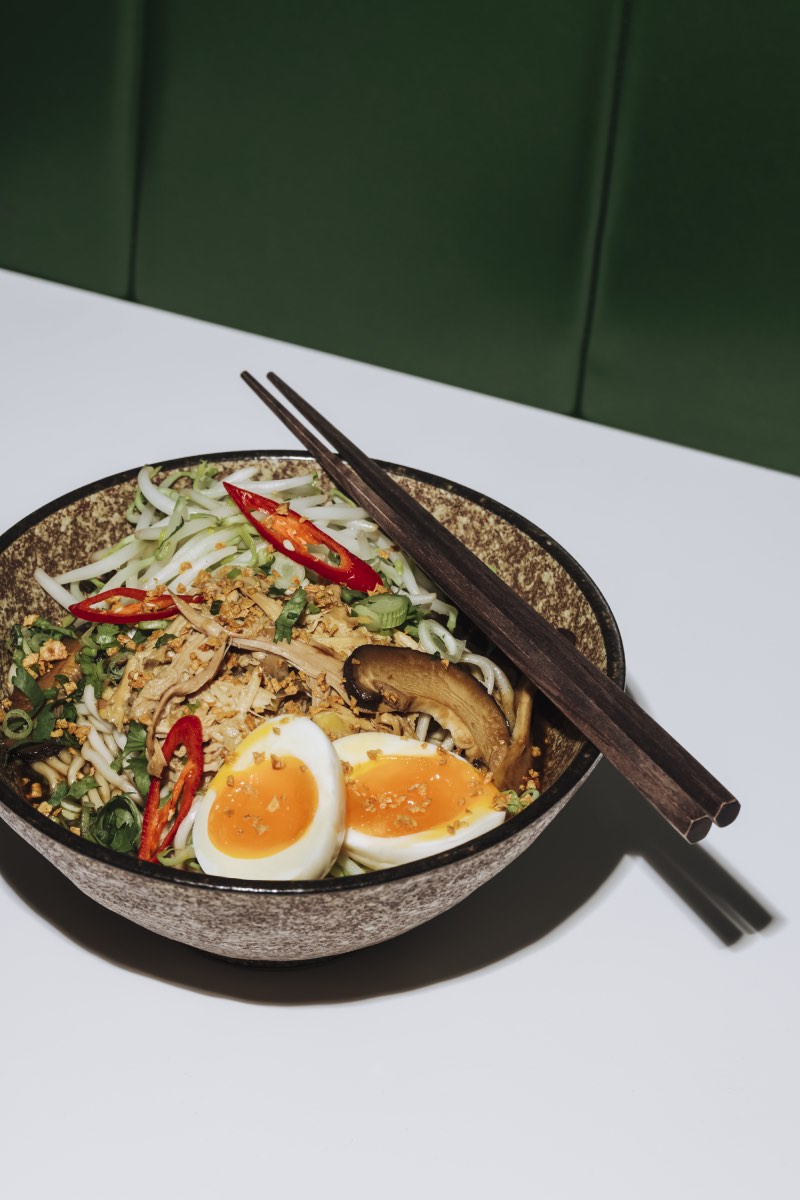
Shredded Chicken Noodles
By Damian D’Silva
80g dried cuttlefish
100g dried anchovies
100g dried shiitake
1kg chicken backbone
1kg fish bones
300g prawn heads and shells
40g acacia bark
3 star anise
2 Chinese black cardamom
50g old ginger, skinned and sliced
2 whole garlic bulbs
80g rock sugar
1.6kg whole chicken
5 tablespoons black rice vinegar
4 tablespoons light soya sauce
2 tablespoons dark soya sauce
Salt, to taste
80g shallots, sliced
500g fresh egg noodles
150g bean sprouts
4 hard-boiled eggs
Spring onions, sliced thinly
Chinese celery, chopped finely
Red chillies, sliced thinly
- Wash dried anchovies and cuttlefish briefly in water then leave to dry. Soak dried shiitake in warm water till soft; keep the water to add to the stock. In a stockpot, bring five litres of water to boil.
- Wash and clean the chicken bones, fish bones and prawn shells. Ensure that the blood from the fish bones are removed. Place the prawn heads and shells in a saucepan and fry till most of the liquid has evaporated; take caution not to burn them.
- Once dry, add one litre of water and boil till 500ml is left. Add the chicken and fish bones when the water in the stockpot starts to boil. Next, place the black cardamom, star anise, acacia bark, dried anchovies and dried cuttlefish in a muslin cloth bag and put into the pot.
- Next, add the ginger slices, dried mushrooms and garlic bulbs in the pot. Lastly, add the rock sugar. In 30 minutes, turn the heat to medium and continuously remove the scum from the pot. Keep cooking till the liquid is reduced by half.
- Turn the heat to low and add the whole chicken and cook till done, around 40 minutes.
- Remove the chicken from the stock, debone the chicken and add the bones back into the stockpot and cook till the liquid has halved. Remove the mushrooms and slice for later.
- Next, sift out any bones and impurities and add the prawn liquid to the stock, followed by the black rice vinegar, light soya and dark soya and let it simmer for 20 minutes.
- Season with salt to taste. The gravy should be savoury, slightly sour and sweet. Meanwhile, shred the chicken with two forks and mix the light and dark meats together. Fry the sliced shallots till crisp and fragrant.
- Prepare a pot of boiling water for blanching the bean sprouts and noodles. Blanch the bean sprouts for 15 seconds and dunk in cold water.
- Next, blanch the noodles for two minutes. Remove and immediately place under running water until cooled.
- Place the beansprouts in a serving bowl with the noodles on top. Pour the gravy onto the noodles till half-filled.
- Return the gravy to the pot and repeat twice, before topping up the gravy. Add the shredded chicken, sliced mushrooms, halved hard-boiled eggs and garnish with fried shallots, Chinese celery and spring onions. Served with sliced chillies.
This is a Robb Report Singapore x William Grant & Sons initiative that first appeared in the August 2021 issue. Purchase it as a hard or digital copy, or consider subscribing to us here
